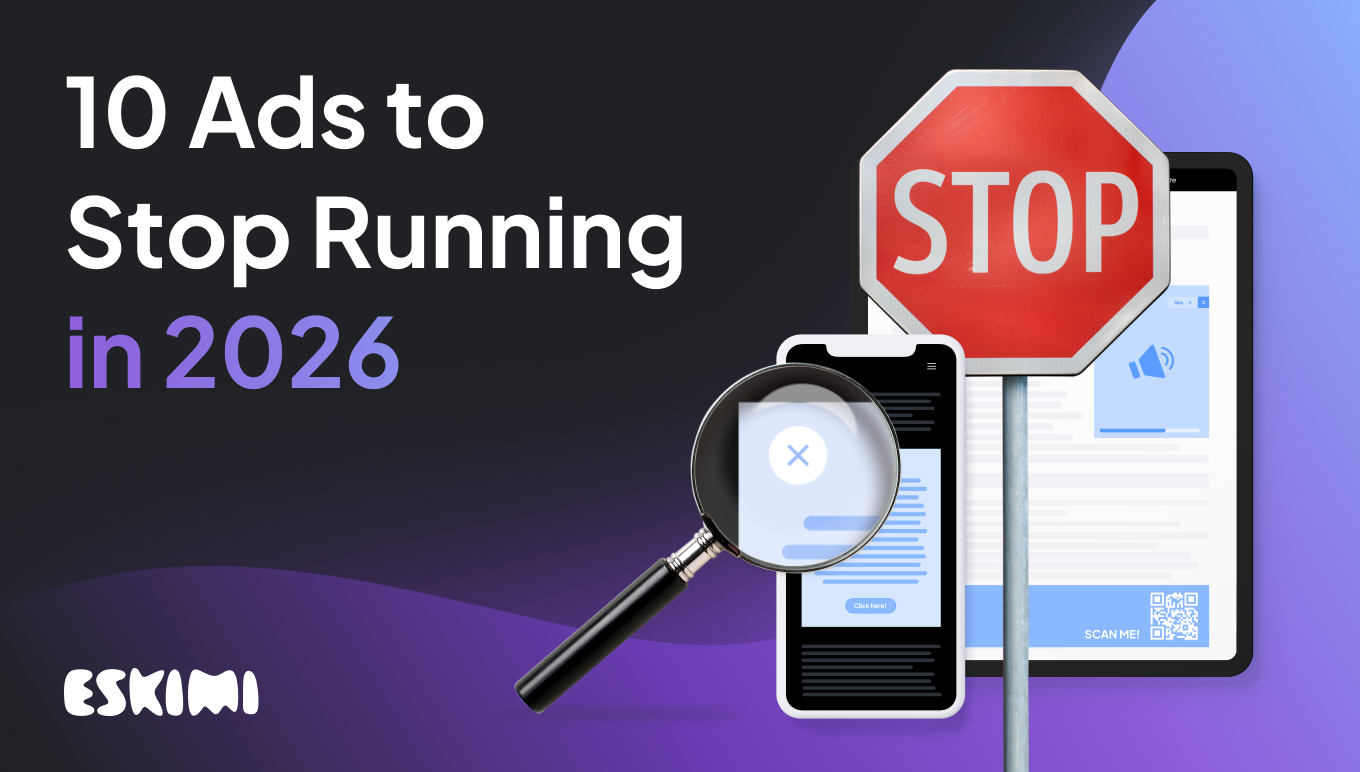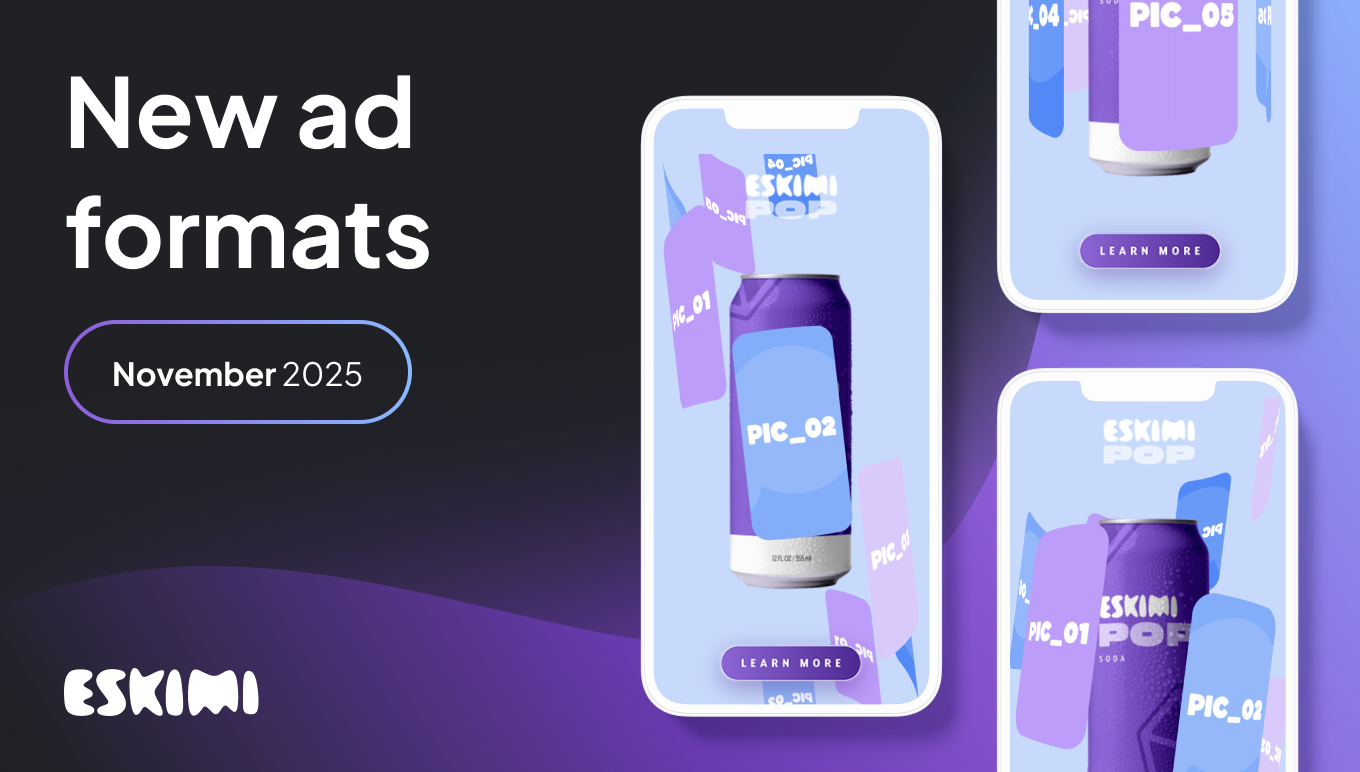All You Need To Know About Outstream Video Ads

As digital advertising spending worldwide continues to grow, one of the most exciting parts of it, video advertising, is steadily earning its place in marketing budgets.
There are many types of video ads, and you may notice how differently they’re served on publisher’s websites or various entertainment channels like Youtube. Some of them appear within the video content itself, and others seem to be “living their own lives.”
The latter we call outstream video advertising – an effective and non-disruptive way to capture viewers’ attention that’s becoming an increasingly popular choice for marketers.
In this post, you’ll learn:
- What is outstream video advertising
- Types of outstream video ads
- Differences between instream and outstream
- Pros and cons of outstream video ads
- And how the future of video advertising looks like
What is outstream video advertising?
Outstream video advertising is a form of video advertising that allows marketers to place video ads outside of traditional video players in places like articles, social feeds, and mobile apps.
It means that the publisher’s website isn’t required to have actual video content for ads to be served on that website. Instead, advertisers can place their video ads within the content of a web page or app, even if those are just text or pictures, appearing as an organic placement out of the video player.
Just like any other ad format, outstream video ads allow you to use various targeting options to reach your intended audiences, including demographic information, browsing behavior, and more.
Outstream video ad example: Neutrogena

Types of outstream video ads
Outstream video ads are divided into three categories:
- In-page – a customized video player is placed on a publisher’s website to show video ads only.
- In-banner – in-banner outstream placements resemble regular display ad units and often sit at the top of the publisher’s website.
- In-text – in-text outstream video ads appear within the text of an article and are triggered to play when the user scrolls to a specific point on the website.

Getting familiar with the different types of outstream ads and understanding their purpose can help you choose the right video ad type for your campaign and reach your target audience more effectively.
Instream vs. outstream video: main differences

If you’ve ever tried to go deeper into this topic, you’ve probably noticed that alongside outstream video ads, another term is always widely used – instream video advertising.
This happens because they’re a part of the same ecosystem, and you could even say that they share some similarities. However, outstream and instream video ads are two different formats that come with their strengths and weaknesses.
IAB report states that investment in video advertising is primarily being directed toward instream videos, with 65% of respondents spending between 41 and 100% of their budgets on this format type. Meanwhile, outstream video ads have already overtaken in-banner videos (IBV) in terms of investment.
Which is the best option for your brand highly depends on factors like budget, target audience, or campaign goals; yet, it’s challenging to decide when you’re not familiar with the main differences between the two.
So let’s dive in.

Video ad placement
Video ad placement is the key difference between instream and outstream ads, which makes it easier for us to distinguish one from another.
Instream video ads are placed within a video stream, therefore, to be served, they require a video player. The best example of instream video ads are ads that you see on Youtube, which appear either before (pre-roll), during (mid-roll), or after (post-roll) the video content you’re already watching.
Outstream video ads, on the other hand, appear outside of a video player, typically within non-video-based editorial content, e.g., articles.
Viewer control
The situation is quite similar regarding how much viewers can control these ads.
Both instream and outstream ads are typically autoplayed, meaning that they start automatically once the video content is loaded. However, depending on the type, outstream might sometimes require user interaction to be played.
Instream ads can also be either skippable after a few seconds (making those first seconds very important) or unskippable, while outstream ads are usually easier to scroll through or close right away.
Sound
Both instream and outstream video ads do not necessarily require sound – they can be designed to work with or without sound, depending on your preferences and goals.
However, instream video ads are more likely to come with some soundtrack or speech, much more often than outstream ads.
Viewer experience
Unlike outstream video ads, instream can disrupt the viewer’s experience, especially if they are long or appear frequently. Since they appear within the video content, instream ads stop you from watching, even if it’s just for a few seconds.
Meanwhile, since outstream video ads are not placed within the video stream, they are considered less intrusive and can provide an opportunity for viewers to engage with the ad without interrupting their content consumption.
Completion rate and visibility
Instream ads typically offer higher completion rates and better visibility because these ads are seen as part of the main content – something you’re already watching and are engaged in.
As for the outstream video ads, it’s the opposite – since they’re not placed within the video stream, they may not receive as much attention (easier to ignore or scroll through), and they generally come with lower completion rates and visibility.
Length
Instream video ads are typically shorter than outstream and can range from a few seconds to a minute or two. This is because viewers are more likely to skip a longer ad as it interrupts the video they’re watching.
Outstream can vary in length but can also be longer than instream ads, providing more opportunities for storytelling and increasing user engagement.
Targeting
In terms of targeting, these two formats have more similarities than differences. In fact, both of them provide wide possibilities for reaching the intended target audience, including demographics, behavior, location-based targeting, and more.
Best for
In-stream video ads are best for advertisers who want to reach a large audience with a high-quality video ad experience that comes with the video content the user is watching. Besides a good reach, it can also help them to boost brand awareness.
Although outstream ads can also help increase reach beyond traditional video placements, they are often used for performance-based campaigns aimed at driving traffic to the website or increasing the number of ad installs.
Pros and cons of using outstream video ads
Before making a decision on whether or not to use outstream video in advertising campaigns, one should become equally familiar with the benefits and drawbacks this form of placement comes with.

Benefits of outstream video
- Expanded reach. Advertisers using outstream video ads can reach a wider audience because video players do not limit them. This allows them to serve video ads within editorial content on basically any webpage.
- Increased brand awareness. Because outstream video ads can help expand reach beyond video players, it can also result in better brand awareness. By placing these ads within relevant content, advertisers can expose their brand to users who may not have been actively searching for their products or services.
- Flexibility. Since outstream video ads don’t require any “special equipment” like video players, it’s a far more flexible format that’s easier to implement than some other types of video ads.
- Less intrusive. The design of outstream placements is standalone, which allows users to engage with the ad or not. This way, it’s not interrupting the browsing/watching experience and doesn’t forcefully expose users to ads.
- Targeting options. Targeting possibilities using outstream placements are very similar to basic display ads, i.e., location, device, interests, browsing behavior, or contextual targeting, which enables advertisers to experiment with new formats without the risk of losing a portion of potential customers.
- Better engagement. Videos are one of the most popular forms of entertainment, so telling your brand story through video ads can help capture the user's attention and drive engagement.
- Transparent measurement. You can track the performance of outstream video ads using a variety of metrics such as viewability, completion rate, and engagement rate, which can provide valuable insights and help optimize future campaigns for better results.
Drawbacks of outstream video
- Requires experience. Executing outstream video campaigns requires specific knowledge, so it might be challenging if you’re a first starter without a trustworthy advertising partner.
- Ad visibility. Compared to instream video ads that are placed within video content, outstream ads are likely to result in lower visibility as users may not always notice or engage with them.
- Ad blocking. Some users may have ad-blockers installed which could prevent outstream video ads from being displayed.
- Ad placement. Poorly placed outstream video ads may lead to accidental clicks or frustrate users, leading to negative brand perception.
What does the future hold for video advertising?
Over 90% of European marketers are already allocating digital video budgets to drive brand goals, according to the IAB report (March 2022).
64.3% of companies said they plan to increase digital video advertising investment from between 11-50% over the next 12 months, while 7.1% of respondents were about to dedicate more than 51% of their budgets to digital video advertising.

In the US, digital video advertising spending was estimated at $67.16B in 2022. By the end of 2023, it is projected to increase to $78.5B, more than doubling the figure from 2019 ($31.86B).

These results are driven by the growth of emerging formats like CTV, Digital OOH, AI, AR, and more, and several key growth drivers they come with. For instance:
- Improved measurement/effectiveness
- Better consumer experiences
- More native/integrated experiences
- Scale
- Ability to run across devices/screens
This clearly indicates two things – the growing importance (and potential) of video advertising as a key channel for brand-building campaigns and the fact that more digital marketers are starting to notice its positive impact on overall growth.
Tap into outstream video advertising
Outstream video ads are taking the advertising world by storm as an effective and efficient way to reach ideal customers using video content. Its unique placement outside traditional video players enables advertisers to serve video ads on various websites and different parts of them, giving more flexibility over where their ads appear.
With the continued growth of digital video advertising, outstream videos will continue to play an important role in the overall advertising mix, allowing brands to expand their reach, increase brand awareness, and improve their bottom line.
Need help getting started with outstream video advertising? Contact the Eskimi team, or feel free to book a demo.
Level Up Your Advertising with Eskimi
- Reach 96% of Open Web
- 2,500+ Targeting Options
- 100% Managed or Self-Service
- In-House Creative Studio Team
- Display, Video, In-Game & CTV
- #1 Rated DSP on G2




.png)